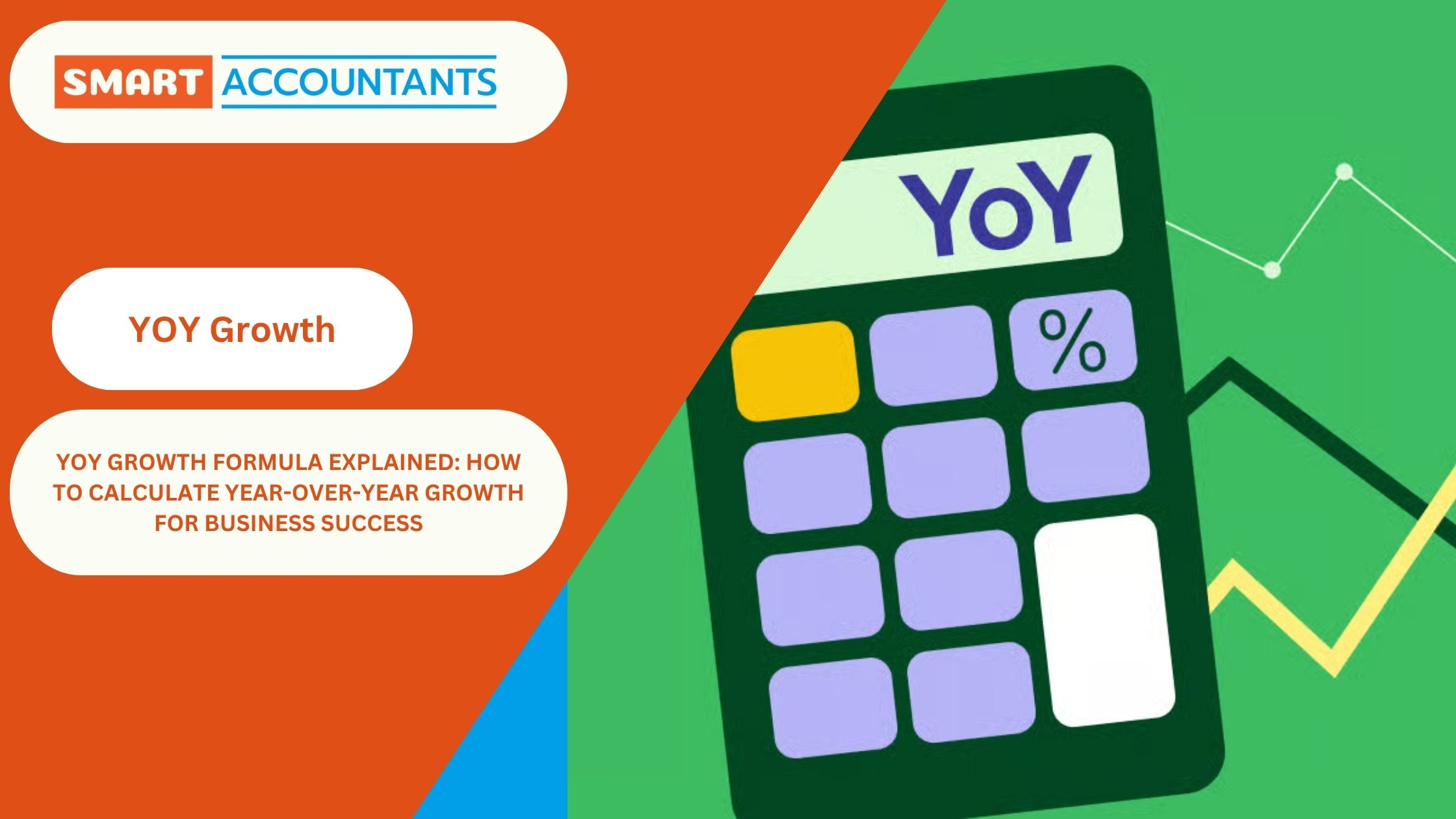Year-over-year (YoY) growth is one of the most trusted metrics for measuring a business’s long-term success. Whether you’re a small business owner, CFO, or growth strategist, understanding this formula can help you assess performance trends and improve decision-making. More importantly, for firms offering accounting services, it’s an essential tool to evaluate financial health and guide future strategies.
What Is YoY Growth and Why Is It Important?
Year-over-year growth compares a specific financial metric (such as revenue, expenses, or net income) from one period to the same period the previous year. This approach minimizes seasonal distortions and provides a more consistent view of a company’s performance over time.
Unlike month-over-month comparisons, YoY metrics offer clearer insight into annual performance trends—making them vital in financial reporting and growth forecasting tools.
YoY Growth Formula: The Basics
The YoY growth formula is straightforward:
YoY Growth (%) = [(Current Year Value − Previous Year Value) / Previous Year Value] × 100
Example:
- January 2025 Revenue = $60,000
- January 2024 Revenue = $48,000
- YoY Growth = (($60,000 – $48,000) / $48,000) × 100 = 25%
This means revenue increased by 25% compared to the same month last year.
How Different Industries Use YoY Growth
Ecommerce:
- Q1 2025 Sales: $500,000
- Q1 2024 Sales: $400,000
- YoY Growth = 25%
SaaS:
- MRR in May 2025: $45,000
- MRR in May 2024: $30,000
- YoY Growth = 50%
Retail:
- Net income on Black Friday 2024: $80,000
- Black Friday 2023: $60,000
- YoY Growth = 33.3%
Such growth trends are often integrated into financial dashboards provided through professional accounting services.
Advanced Variations of YoY Growth
While the standard YoY formula is useful, there are advanced variations:
- Trailing 12-Month (TTM) YoY: Measures the most recent 12 months against the 12 before that.
- Compound Annual Growth Rate (CAGR): Smooths out growth over multiple years.
- YoY vs. Sequential Growth: While YoY compares the same period year over year, sequential growth looks at consecutive periods (e.g., Q1 to Q2).
These metrics support deeper performance evaluation and are critical for services like tax planning and financial forecasting.
Implementing YoY in Your Reporting
To start using YoY growth:
- Collect historical data from reliable bookkeeping services
- Choose comparison periods (monthly, quarterly, or annually)
- Apply the formula using spreadsheet software or accounting platforms
- Visualize the data through trend charts or financial dashboards
Including YoY analysis in your financial reporting allows businesses to identify seasonal patterns, forecast revenue, and make better investment decisions.
Sample YoY Growth Table
| Period | 2025 Revenue | 2024 Revenue | YoY Growth |
| Jan | $60,000 | $48,000 | 25% |
| Feb | $55,000 | $50,000 | 10% |
| Mar | $70,000 | $60,000 | 16.7% |
Visual tools like this are often part of business advisory and accounting software solutions.
FAQs
Q1: What is the YoY growth formula?
YoY Growth (%) = ((Current Period – Previous Year Same Period) / Previous Year Same Period) × 100
Q2: Why is YoY growth better than MoM?
It eliminates seasonal bias and provides a more stable view of performance trends over time.
Q3: Can YoY be used for cost analysis?
Yes. Compare yearly expenses to monitor cost control, especially in payroll services or overhead.
Q4: Is YoY relevant for small businesses?
Absolutely. It provides insights that can guide decisions around bookkeeping services, marketing spend, and hiring.
Q5: How does YoY growth support financial planning?
It helps accountants and clients forecast revenue and expenses, informing tax planning services and investment decisions.
Conclusion: Why YoY Growth Matters
Understanding and applying the YoY growth formula can dramatically improve your business’s ability to interpret long-term performance. It simplifies reporting, enhances investor communications, and helps in forming smarter strategies.
If you’re looking to integrate YoY analysis into your business reporting, our expert team at Smart Accountants can help you track key metrics, identify patterns, and make data-driven decisions.






